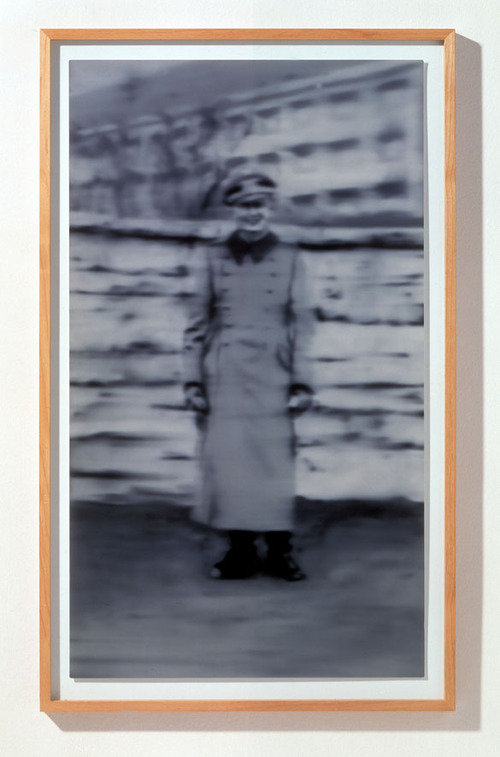Gerhard Richter
dal 3/4/2008 al 10/5/2008
Segnalato da
3/4/2008
Gerhard Richter
Contemporary Art Centre - CAC, Vilnius
Survey. The great and single theme of Richter - behind and beyond the various motifs, attitudes of style, and quotations from art history - is and remains the art of painting itself, the language and means of expression of which he questions again and again, in the phases of work that seem so heterogenous. In thus can be seen his mistrust of binding oneself to style or content in art, a mistrust which is based on his biography. As a foil of contrast to painting, the artist uses its modern counterpart in the depiction of reality, photography. It was the year 1962 that he first took a photograph as the starting point for the act of painting.

Gerhard Richter is one of the three most internationally well-known German artists
today, the other two being Sigmar Polke and Georg Baselitz. The ifa, in a
monographic exhibition, shows 27 of his exemplary works. The selection that was made
by the artist himself can be considered a retrospective in nuce: it gives insight
into all the phases of Richter's creative work – from the photopainting of the 1960s
up to and including the abstract paintings of the 1980s and 1990s. His confrontation
with recent history can be found in the ifa exhibition as well as in his work
entitled 'Black-Red-Gold', done in 1999, which had been commissioned for the Berlin
Reichstag, the German Parliament building, following the return of the government
from Bonn to the original capital of Germany after reunification.
The great and single theme of Gerhard Richter – behind and beyond the various
motifs, attitudes of style, and quotations from art history – is and remains the art
of painting itself, the language and means of expression of which he questions again
and again, in the phases of work that seem so heterogenous. In thus can be seen his
mistrust of binding oneself to style or content in art, a mistrust which is based on
his biography. Moving in the year 1961 from Dresden to Düsseldorf, Gerhard Richter
leaves not only his social and political environment, but that of his art as well.
He exchanges the artistic tradition of socialist realism of the then German
Democratic Republic (the former East Germany) for one of the late informal painting
and a beginning involvement with pop art. From this changeover, he retains doubt in
regard to any certainty and/or fixed commitment in the field of art. As he
formulated it in 1966, 'I have no intentions, no system, no style, no particular
case or message.'The artist understands the act of painting as a search for the
reality of today: 'What I saw as my big weakness, namely the inability to 'create a
picture', is not in fact an incapability, but rather an instinctive striving for a
more modern truth, which we are already living (Life is not what is said, but the
process of saying, not the created picture, but the creating).' (3 November 1989)
As a foil of contrast to painting, Gerhard Richter uses its modern counterpart in
the depiction of reality, photography. It was the year 1962 that he first took a
photograph as the starting point for the act of painting. Since then, he has
systematically collected photographs as patterns or 'first layers' for his
paintings. Thus emerged an archive of private and public photos from 1945 up to
today, consisting of newspaper photos, snapshots by amateurs, as well as photographs
taken by himself – all of which were exhibited for the first time in 1972 under the
title 'Atlas'. From this storehouse of photographs, Gerhard Richter chooses his
motifs, which he then enlarges or perhaps uses only a detail from. Through the
precise reproduction of the original with all its lack of sharp definition, the
picture points to the fact that it comes from the realm of photography, and to its
origins in the banal world of pictures in mass media or amateur photography. The
motive of the painting remains vague, as Richter reduces to tones of gray, in his
translation of photography into painting. Thus he removes painting from the object,
which – at the end of the 60's in the so-called 'Grey Pictures' – completely
disappears in the colour grey – for Richter, this is the colour of indifference, of
nothing. The artist later returns to colour and finds his way to a complex painting
of and in layers in the abstract paintings of the 1980s.
Exhibition organiser: Institute for Foreign Cultural Relations ifa
Opening: Friday 4 April 18
Press conference and guided tour by Dietmar Elger: Friday 4 April 17
Contemporary Art Centre - CAC
Vokieciu 2 - Vilnius



